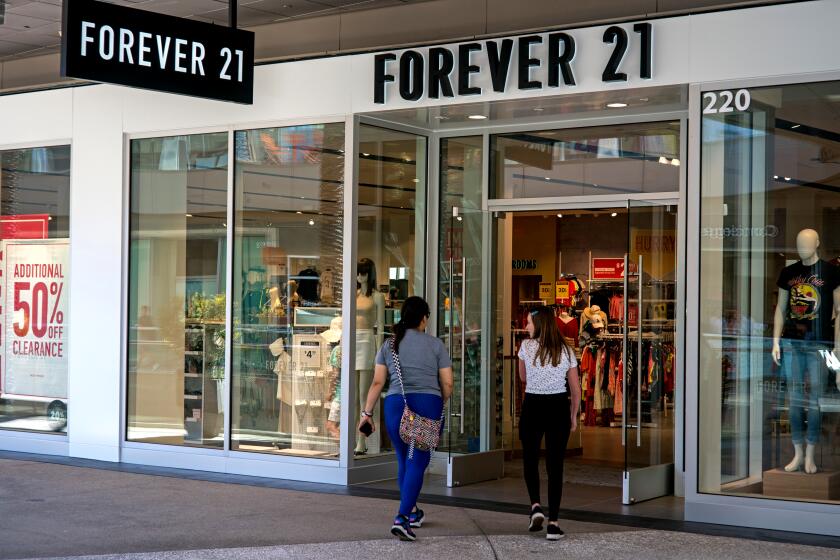Retail Sales Dip in August
- Share via
U.S. retail sales dipped in August and the most comprehensive gauge of the U.S. international trade gap widened to a record in the second quarter, government reports released Tuesday showed.
The Commerce Department said retail sales fell 0.3% in August -- more than the 0.1% drop that Wall Street analysts had been projecting -- but sales excluding autos rose 0.2%, matching expectations.
July sales figures were revised upward to advance 0.8% overall and 0.3% outside of cars, compared with the previously reported 0.7% and 0.2% gains.
In a separate report, the department said the U.S. current account gap -- the broadest measure of trade and investment flows between the United States and the rest of the world -- widened again in the second quarter, growing to a record $166.18 billion. That was well above analysts’ expectations for a $159.35-billion shortfall.
The data did nothing to dissuade investors from believing that the Federal Reserve will raise interest rates again when it holds a policy-setting meeting next week.
In the retail sales report, economists focused on the numbers excluding autos as a sign that consumer spending was holding up, despite reports this month of disappointing back-to-school retail sales.
“We know that higher energy prices are nibbling away at consumers’ spending power and a relatively slow job market is adding to their hesitancy to spend more freely,” said Oscar Gonzalez, an economist with MFC Global Investment Management in Boston. “In this type of environment, solid but not enthusiastic spending actually is a good sign.”
Auto sales slid 1.9% in August, their biggest drop since June. Some other categories also showed weakness, including clothing, which fell 1.4%, and department stores, which saw a 0.8% decline.
Still, other sectors picked up the slack. So-called non-store retailers -- Internet and catalog businesses -- saw sales rise 1.7%, while sales at health and drug stores were up 1%.
The current account gap figures, despite setting a record, did not appear to worry economists much.
“The bottom line on the current account is it’s an all-time record,” said Sean Callow, a currency strategist with IDEAglobal in New York. “It just shows that the United States is continuing to rely on the world’s savings to an increasing degree.”
Analysts were surprised by the drop in international investment income, which fell to only $2.64 billion in the second quarter from $12.16 billion in the first three months of the year, widening the second-quarter gap.
Although economists have long worried about the size of the current account imbalance and have said it will lead to a drop in the dollar’s value in foreign exchange markets, the United States has continued to attract international investment. Net inflows of capital totaled $71.8 billion in June, according to Treasury Department data. Data for July are expected Thursday.
More to Read
Inside the business of entertainment
The Wide Shot brings you news, analysis and insights on everything from streaming wars to production — and what it all means for the future.
You may occasionally receive promotional content from the Los Angeles Times.










